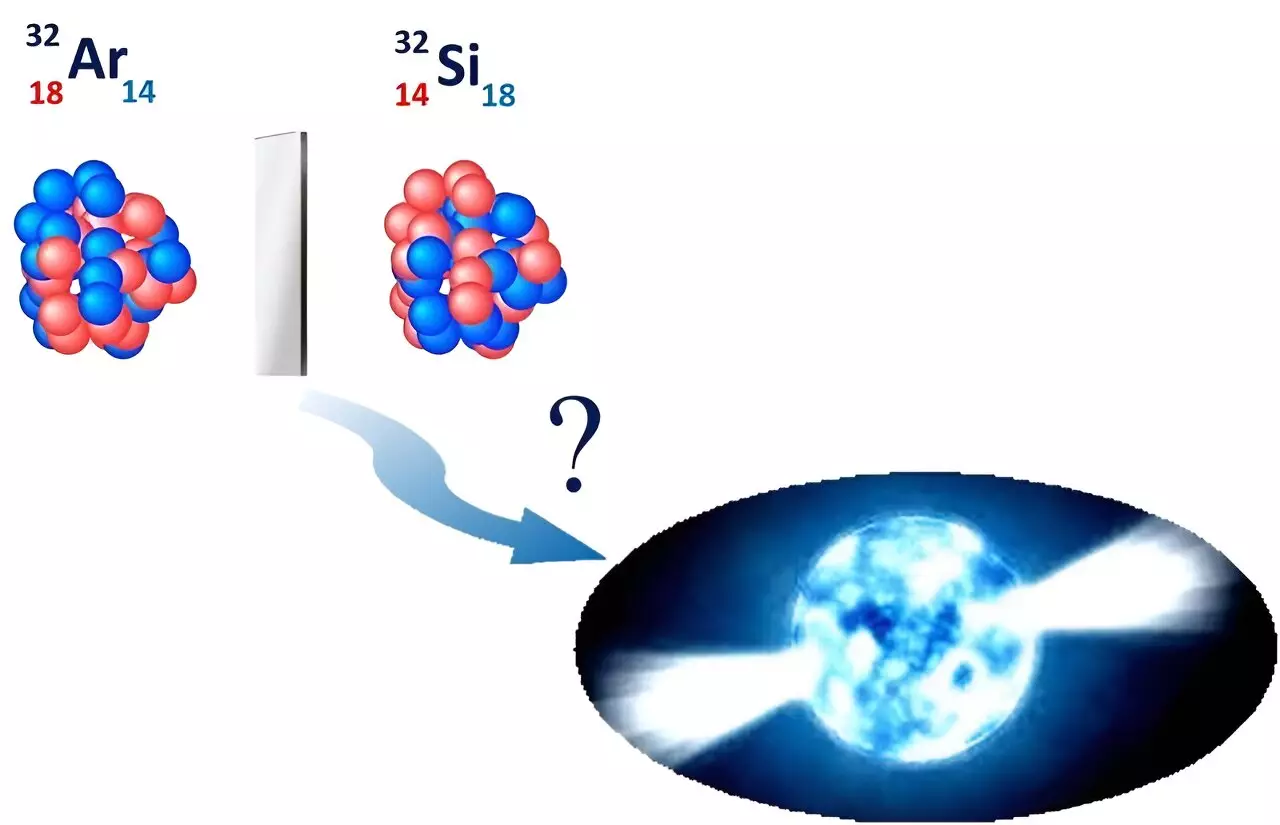Researchers have delved into the realm of nuclear physics by utilizing laser-assisted measurements to examine the nuclear radii of various silicon isotopes. By manipulating the number of neutrons within an atomic nucleus, subtle changes in the size of the nucleus can be observed. These modifications influence the energy levels of an atom’s electrons, giving rise to what is known as isotope shifts.
In a recent study, scientists focused on stable silicon isotopes like silicon-28, silicon-29, and silicon-30, alongside the unstable silicon-32 nucleus. By comparing the nuclear radius of silicon-32 with its mirror nucleus, argon-32, insightful data was gathered. This comparative analysis enabled researchers to establish limits on various variables that play a crucial role in understanding the physics of astrophysical entities such as neutron stars.
While advancements in nuclear theory have been made, scientists continue to grapple with longstanding challenges in comprehending the intricacies of nuclei. A significant hurdle lies in connecting the description of nuclear size with the fundamental theory of the strong nuclear force. Additionally, uncertainties persist regarding the reliability of nuclear theories in characterizing nuclear matter, particularly in extreme conditions like those found in neutron stars.
Precision measurements of charge radii offer a pathway to unraveling these mysteries and addressing unresolved questions in nuclear physics. By leveraging laser spectroscopy measurements of atomic isotope shifts, researchers were able to ascertain the nuclear radius of diverse silicon isotopes at cutting-edge facilities like the BEam COoler and LAser spectroscopy facility (BECOLA) at the Facility for Rare Isotope Beams (FRIB) at Michigan State University.
The results obtained from these experiments serve as a critical benchmark for advancing nuclear theory and enhancing our understanding of atomic nuclei. Of particular significance is the utilization of the charge radii difference between silicon-32 and argon-32 to refine parameters necessary for describing the unique properties of dense neutron matter within neutron stars. Notably, these findings align with constraints derived from gravitational wave observations, underscoring the significance of interdisciplinary research in pushing the boundaries of scientific knowledge.



Leave a Reply